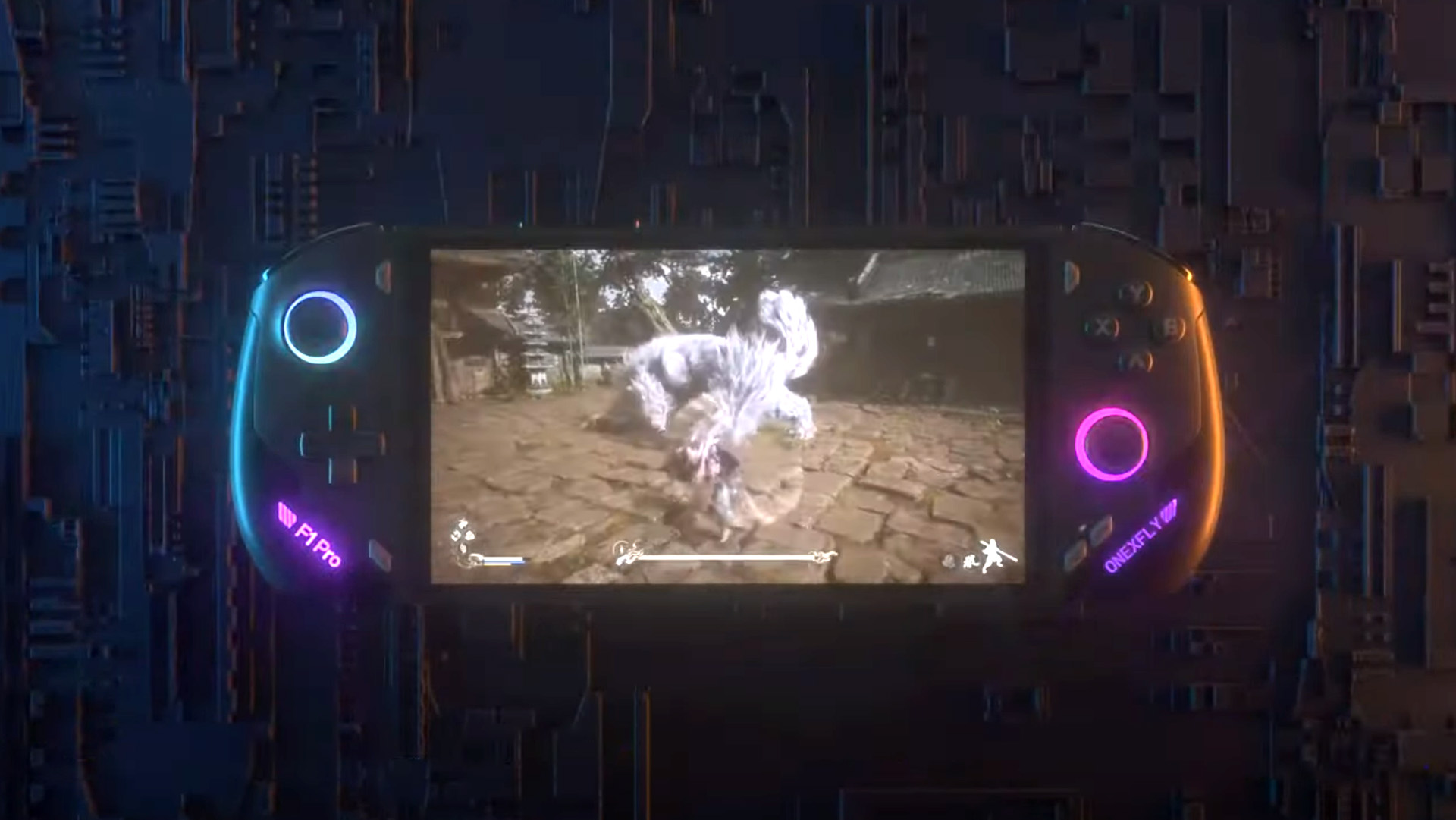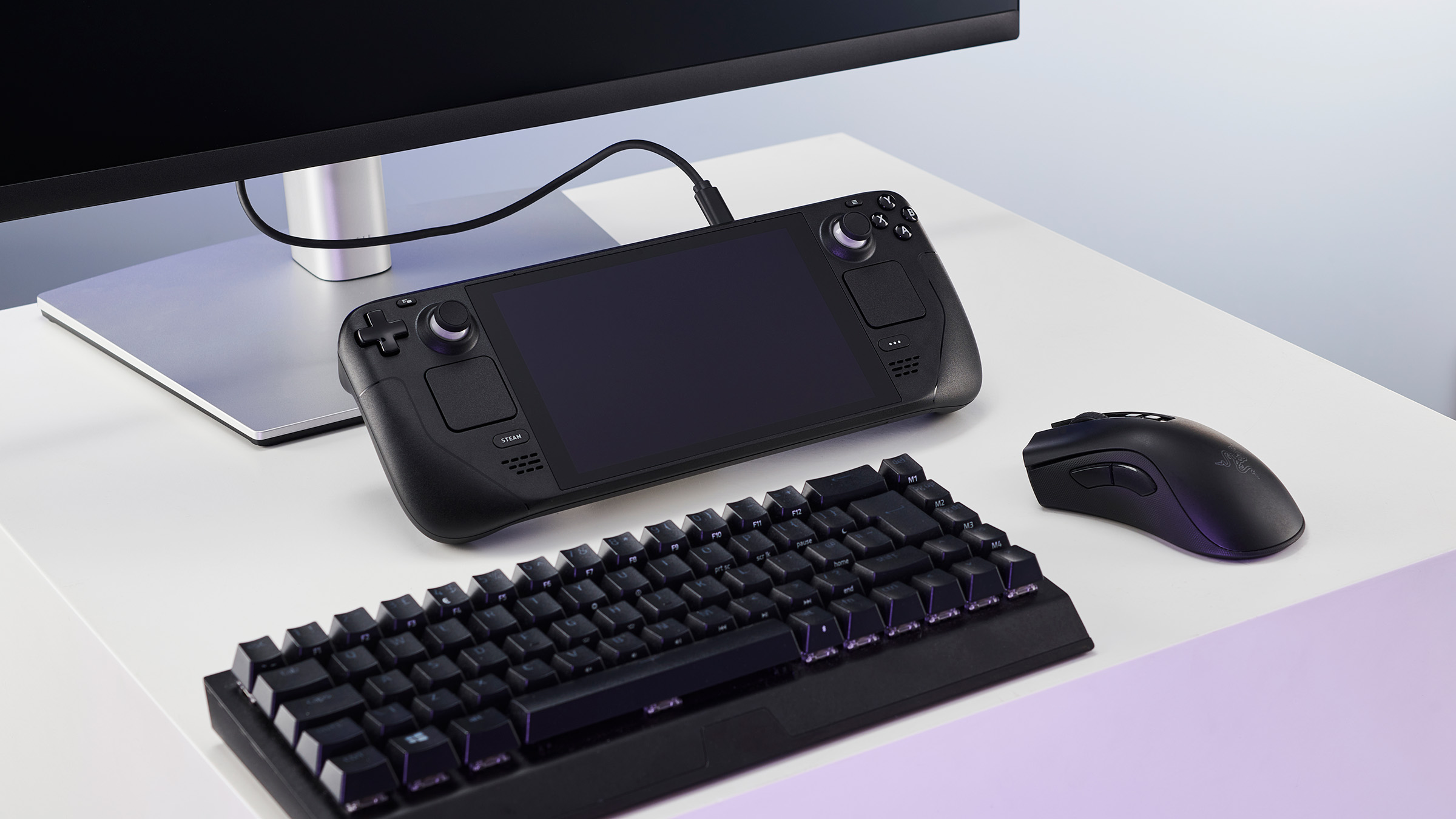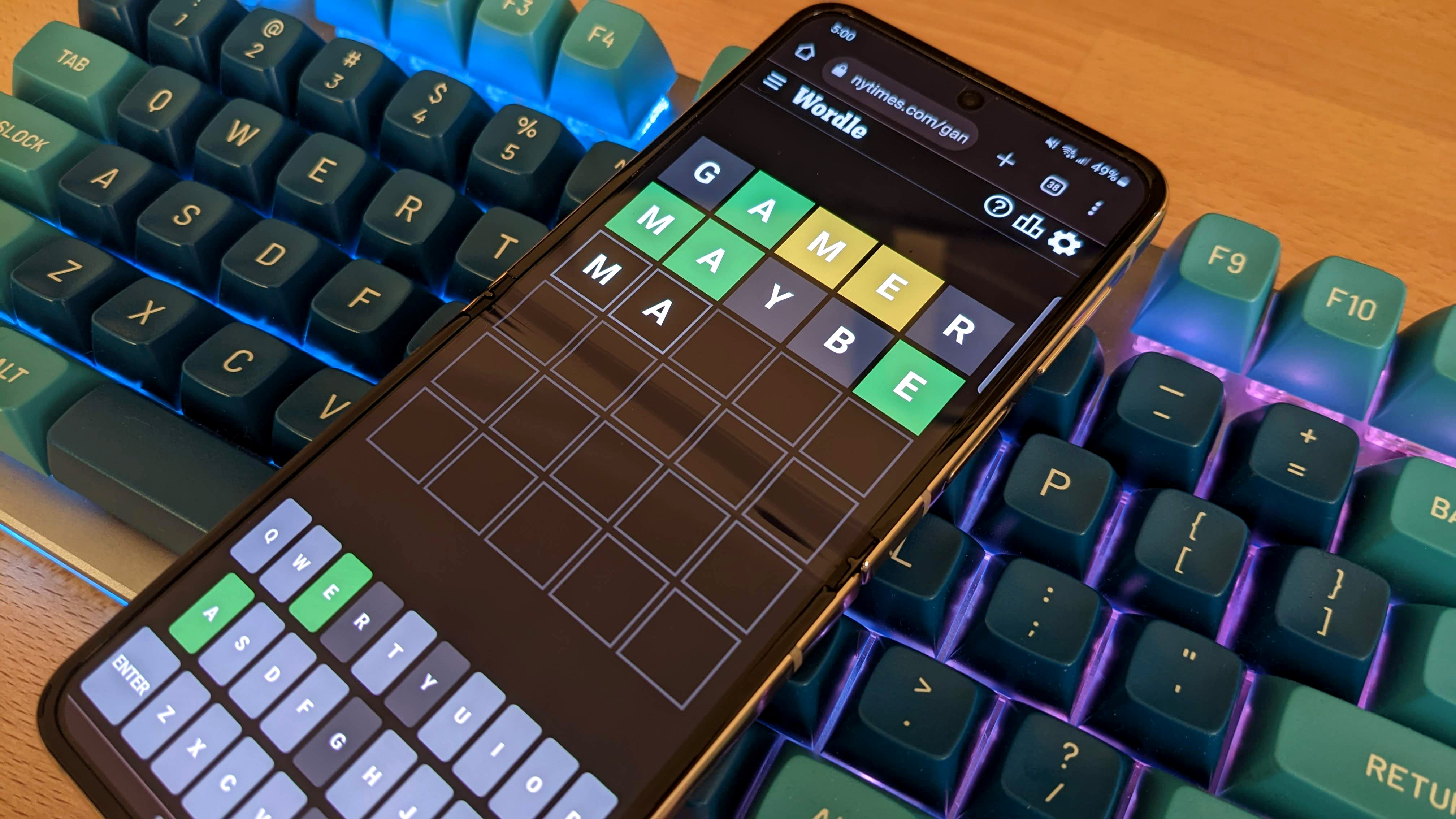
The handheld I've been dreaming of since my hands-on with the HX 370.
OneXPlayer, also known as One-Netbook, has announced a new handheld, the OneXFly F1 Pro. It comes with a new 7-inch OLED display, 144 Hz refresh rate, and RGB-laden exterior. What’s more exciting, however, is the chip powering it. That would be AMD’s latest mobile processor, the Ryzen AI 9 HX 370.
We don’t have all the details yet but the new OneXFly F1 Pro was announced over on the One-Netbook YouTube channel. In it, the handheld is noted with a higher-than-usual refresh rate of 144 Hz, which might just about be do-able with the HX 370’s 890M GPU in the least demanding games, alongside an OLED panel.
OneXPlayer notes the screen’s “wide color gamut”, “stunning brightness”, and “vibrant colors” in the video, all of which sound very promising. Though you could say the same thing of just about any OLED screen. It also notes a narrow bezel around all edges of the screen, though it’s notably slimmer-looking on the top and bottom.
The joysticks are reportedly drift-free, presumably because they’re using Hall effect sensors. That’s not specifically mentioned, though OneXPlayer’s other recent designs all use the Hall effect, including the ludicrously large OneXPlayer X1 we’ve reviewed recently. Here’s hoping the F1 Pro isn’t such a damp squib.
We’ve had really good experiences with the previous OneXFly model, even awarding it 87% in our review.
The main event is the choice of chip. OneXPlayer shows three different AMD chipsets in the teaser video, alluding to a few different options: the Ryzen 7 8840U, Ryzen AI 9 365, and Ryzen AI 9 HX 370.
The Ryzen 7 8840U isn’t new—the Ayaneo Flip DS I recently reviewed uses this chip. It’s a good processor, though it’s practically identical to the 7840U, which is, in turn, practically identical to the Z1 Extreme. They all feature the same GPU, the Radeon 780M. That means you’re looking at near-enough the same performance and power demands as most existing handheld gaming PCs on the market with this option.
The Ryzen AI 9 365 is an interesting chip. It’s brand new and offers a powerful CPU component with four Zen 5 cores and six Zen 5c cores (essentially ‘lite’ versions of the full Zen 5 core). Alongside that, the Radeon 880M GPU. With only 12 Compute Units (CUs), this GPU isn’t the best of the best. That said, it is built with the most up-to-date RDNA 3.5 architecture tailored to low-power environments. That might come in handy on a handheld.
Best handheld gaming PC: What’s the best travel buddy?
Steam Deck OLED review: Our verdict on Valve’s handheld.
Best Steam Deck accessories: Get decked out.
Steam Deck battery life: What’s the real battery life?
The star of the show is the Ryzen AI 9 HX 370. This is the chip I had my hands on back in July and at the time suggested it would make a wicked processor inside a handheld gaming PC. It comes with four Zen 5 cores and eight Zen 5c cores. Importantly, it also comes with the Radeon 890M GPU. This offers 16 RDNA 3.5 CUs, which even at its worst in my testing was around 20% faster than the 780M it replaces.
Performance won’t be an exact match to that which I reported from the Asus Zephyrus G16, though to give you an idea of the performance leap between the 780M and 890M, here are some of my benchmark results.
One commonly requested feature from comments across YouTube and Discord, and something we know nothing about just yet, is whether the device will come with a battery to match the ROG Ally X (80 Whr) or opt for something smaller. The exact battery life will depend on how well the HX 370 can adjust to the constraints of a compact handheld, though an 80 Whr battery wouldn’t go amiss. If the Ally X could do it in a pretty compact shell, I’m pretty sure we’ll see others following suit.
With a little tuning for a restrictive handheld PC chassis, the HX 370 should work a treat for a new generation of handheld gaming PCs. The OneXFly F1 Pro should be one of the first of those made widely available to purchase and the first vying for a spot in our best handheld gaming PC guide.
The official announcement for the device notes it’s “coming soon”, though I have it on pretty good authority that it’ll be out sometime in November.
There’s been no word on pricing yet, though I would expect the HX 370 model to come with a pretty hefty premium. Did someone say $1,000+?







